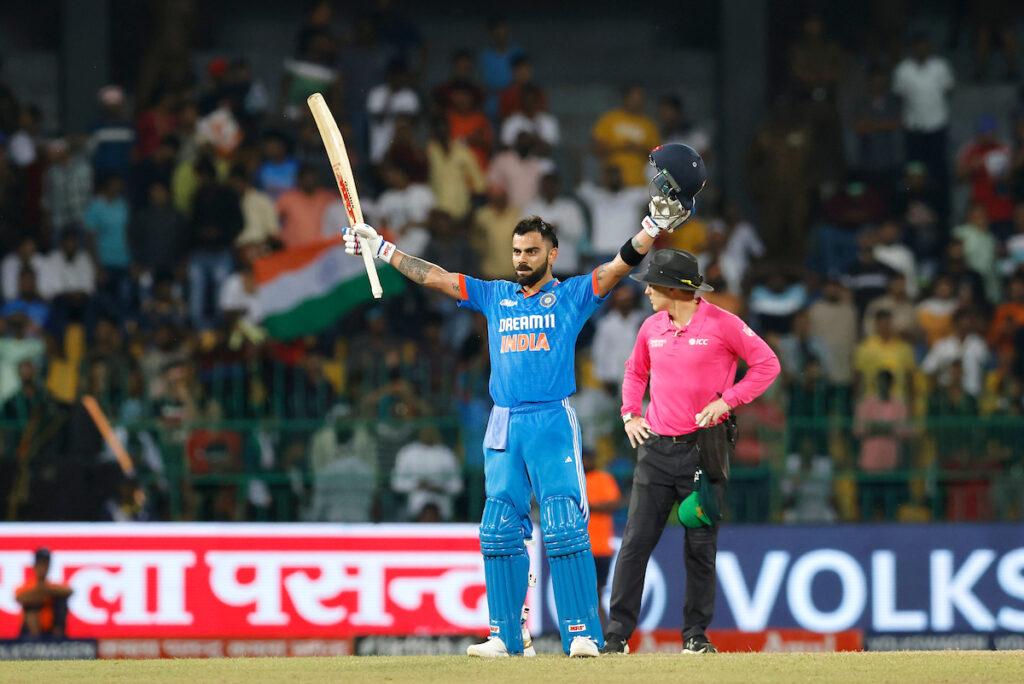It is about 6 PM local time in Colombo. Virat Kohli’s blue flannel looks quite dark. He is sweating profusely, and yet, converting singles into twos. And then something magical happens – Kohli lofts the ball straight back down the ground. Granted that Faheem Ashraf missed the yorker by a fair margin, but for a batter to play such a stroke on 116, especially with humidity levels touching 80 per cent, was testament to Kohli’s awe-inspiring fitness.
For a moment, transport yourself back to the 43rd over. Kohli had just pulled a half-tracker from Iftikhar Ahmed into the boundary hoardings. More than the shot on display, the eyes zoomed in on Kohli seemingly suffering a bit of cramp. For a minute or two, he stretched himself a tad. At that juncture, one wondered whether in sheer fatigue, he would throw his wicket away.
In a few overs’ time, we got our answer. Kohli didn’t just land some powerful shots but continued to run like a jackrabbit between the wickets, to leave the opposition in a state of bewilderment. The spread of his next 33 runs was as follows – 27 runs in singles and twos, alongside a six. Ultimately, he hit top gear in the last over of the innings. He was on 50 off 55 and ended up with 122 off 94. Yes, that included nine fours and three sixes. But the rest of his 68 runs came mostly via ones and twos.
Incidentally, at the back-end of Kohli’s innings, a stat kept flashing on the giant screen – his speed while covering the length of the 22 yards of the pitch. It started at 11 km/h, increased to about 13 km/h, then 16 and 23, before peaking at 26 km/h. At the return crease, it slowed down back to around 13 km/h. Once again, it was evidence of Kohli’s astonishing fitness.
Kohli is now nearly 35. At this age, the body tends to slow down a bit. In other words, a batter’s brain might send the signal that he has to move forward to a fuller-length delivery. However, the front foot moves a tad late to the pitch of the ball. And this is also valid when it comes to running between the wickets. Kohli, though, doesn’t seem to be slowing down. In fact, even at the completion of 50 overs, it felt as if he could bat for another 10.
The typical Kohli experience isn’t just about his initial trigger. It isn’t about his sprint towards the pitch to take guard. It isn’t only related to all those shadow shots that he practices. Not just about the many weapons he possesses or the electric atmosphere at the ground when he essays a cover drive.
It is about how he manoeuvers all the gaps in the field with his deft placement and quick running between the wickets. Perhaps he has a map of every cricket ground on this planet somewhere in the caverns of the brain, which allows him to instinctively judge whether there is just a single on offer, or whether it could be converted into a double.
In the cauldron of Colombo, Kohli definitely put on a masterclass on how to bisect the gaps with clockwork precision and steal singles and twos from right under the fielders’ noses. And the world’s No. 1-ranked side had no answers.




